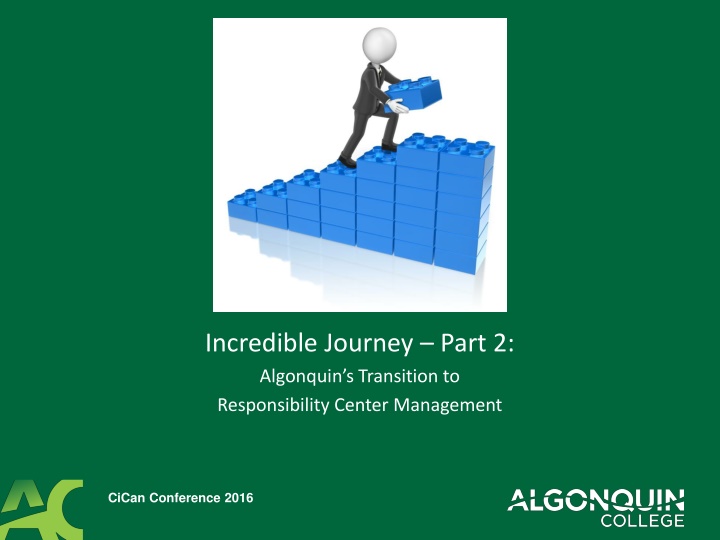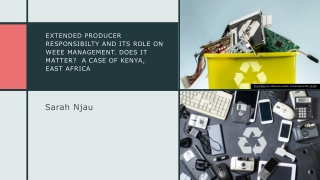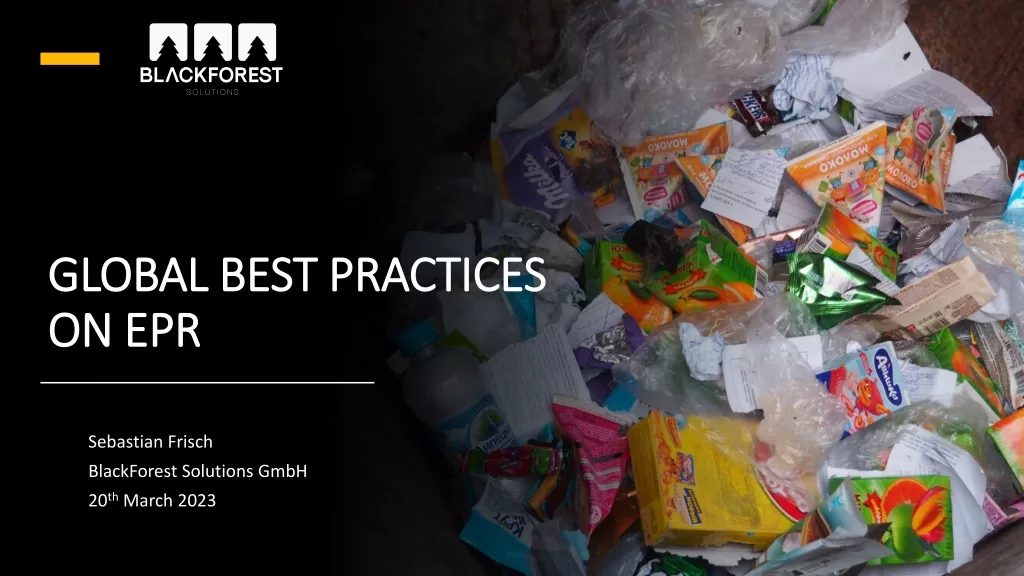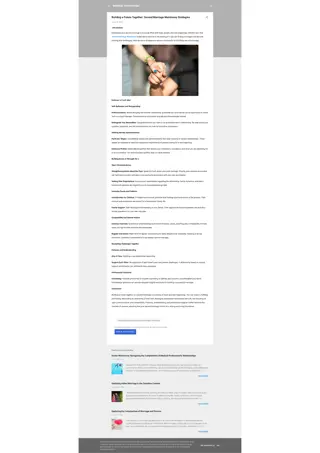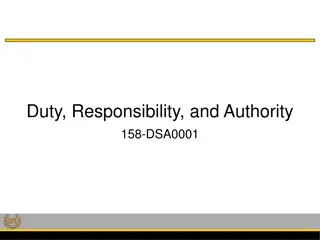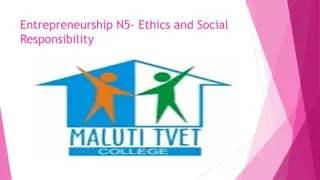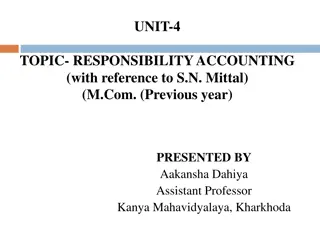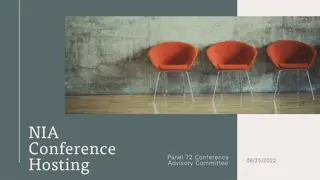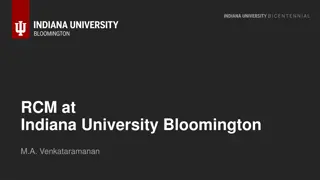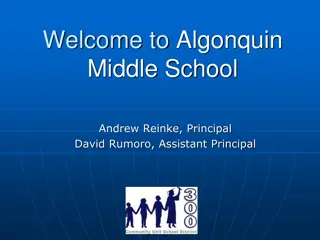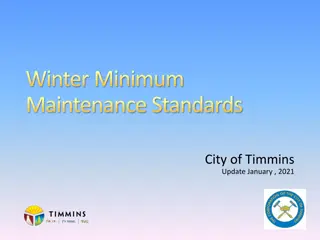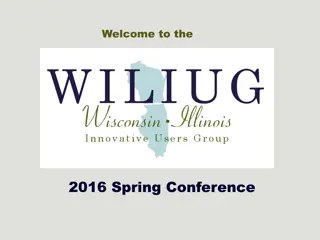Algonquin's Journey to Responsibility Center Management at CiCan Conference 2016
Learn about Algonquin College's transition to Responsibility Center Management (RCM), their stakeholder engagement strategies, budget allocations, and the implementation timelines. Explore how RCM promotes transparency, accountability, and fiscal sustainability through internal principles and cross-college leadership at Algonquin.
Download Presentation

Please find below an Image/Link to download the presentation.
The content on the website is provided AS IS for your information and personal use only. It may not be sold, licensed, or shared on other websites without obtaining consent from the author.If you encounter any issues during the download, it is possible that the publisher has removed the file from their server.
You are allowed to download the files provided on this website for personal or commercial use, subject to the condition that they are used lawfully. All files are the property of their respective owners.
The content on the website is provided AS IS for your information and personal use only. It may not be sold, licensed, or shared on other websites without obtaining consent from the author.
E N D
Presentation Transcript
Incredible Journey Part 2: Algonquin s Transition to Responsibility Center Management CiCan Conference 2016
Incredible Journey Today s Presentation Background Stakeholder engagement Allocations why and how Impact to Date Next Steps CiCan Conference 2016
About Algonquin College Delivers 272 postsecondary programs plus a roster of apprenticeship, career and college preparation, continuing education, and corporate training programs Operates with an annual budget of $320 million Serves more than 21,000 fulltime and 43,000 part-time course registrants, including over 1,300 international Employs over 4,700 full- and part-time faculty and staff 10 Academic departments and 21 Non-academic Departments, including Ancillary and International Operates on 3 campuses in Ontario (Woodroffe, Pembroke & Perth) as well as internationally CiCan Conference 2016
Made at Algonquin approach Define Audiences Decide on Fundamentals Allocation Methodology Measurement Timelines CiCan Conference 2016
RCM and Algonquin RCM is just a tool one promoting transparency and accountability We were looking to change the norm and share responsibility for fiscal sustainability We did internal & external feasibility studies and examined the risks Had wide internal stakeholder participation Built internal principles of Fair, Transparent and Data informed decision making Have a robust, cross-college leadership team Took small, informed steps and kept exploring options and communicating CiCan Conference 2016
Timelines Feasibility studies - 2013 Project for made in Algonquin model 2014-15 Stakeholder engagement - 2014-2015 First year effective April 1, 2015 Budgeted using RCM principles for FY 2016-17 First Customer Survey against SLA s Fall 2016 Currently planning for Budget FY 2017-18 in full RCM model Implementing formal budget feedback process CiCan Conference 2016
STAKEHOLDER ENGAGEMENT 8
Fostering Stakeholder Support Strong, visible Leadership Pan-department representation Gap analysis and Risk Framework Town Hall presentations About RCM sessions Internal training focus, including soft skills toolkit under development Department by department road show Key audience groups Communication is key CiCan Conference 2016
PRINCIPLES 10
RCM Operating Principles The College operates under provincial regulations & laws. RCM will be fair, transparent and data informed. Common institutional practices will prevail Common purpose & core values are KEY College wide projects must still go forward and be supported. College strives for 70/30 split in academic to non-academic expenses All Departments use the central or corporate administration functions CiCan Conference 2016
Accountability goals in RCM project charter: Assign financial responsibility to decision makers Enhance authority of the Dean/Director level Provide incentives for effective resource management & cost control Create a budgetary structure that ties resources to performance Improve budget forecasting and planning Bring together responsibility, authority and accountability at the Dean/Director level Decentralized decision making CiCan Conference 2016
Accountability Framework Accountability Framework must reflect what a Dean or Director is accountable for We chose Contribution Margin Surpluses achieved are shared with the Department to incent budget success Deficits realized will be required to be paid back by Deans and Directors In both situations, final results will be adjusted to reflect non-controllable expenses CiCan Conference 2016
ALLOCATIONS 14
Key Financial Measurement: Net Contribution Margin REVENUE - EXPENSES = NET CONTRIBUTION MARGIN CiCan Conference 2016
Allocation Methodology Current Allocation model: Tuition already allocated Specific & Direct Revenue already allocated Direct Costs already budgeted What did we have to allocate to fully implement RCM: Portion of the Provincial Grant Central Administration Costs Space Costs CiCan Conference 2016 16
Grant Allocation Method Grant allocation assigned to Schools based on Weighted Funding Units derived from budgeted enrolment 90% of Provincial grant allocated Balance allocated to fund tuition hold back, subvention, fund new opportunities, Strategic Investment Priorities (SIP), capital and contingencies Subvention only promised for 2 years as hold harmless CiCan Conference 2016 17
Distribution of Central Administrative Costs % of total Direct Costs of Academic departments as defined by current practice Direct costs are defined as those expenses already budgeted at an academic department Central basket of services represents 18 of 21 non-academic departments CiCan Conference 2016 18
Distribution of Space Costs Total Physical Resources net expenditure budget broken down between: Overhead Main campus operating costs Per square foot allocation (assignable space) 3 calculations All departments charged overhead including rural and leased space At Main Campus only Operating Costs Open Classroom usage % CiCan Conference 2016 19
Operationalizing RCM Steering Committee ended after 2 years in November 2015, mandate largely complete During first 24 months had dedicated Project Manager Ownership of budget process, documentation, financial analysis & day to day support for RCM with Finance College Budget Committee (CBC) assumes Governance role and needs to reinforce the trial aspect of RCM allocations, recommends changes in assumptions, timing & overall targets to Senior Management ASCC Conference
Lessons learned to date: Devil is in the details 2-year hold harmless period allows process issues to be raised and discussed We did not fundamentally change accounting or overall budget principles Level of transparency into financials is perceived differently by each group generally positive There is a need for standardization of processes Support for RCM, training & communications must be on-going Some Deans/Directors still struggling with concepts and decentralized approach under RCM CiCan Conference 2016
Lessons learned to date: Challenges on what is center to the College budget and what is de-centralized continues to evolve RCM in the short term is not a BIG impact because we already had many of the RCM principles in place next year may be a different impact in a full RCM budget cycle There will be other impacts around RCM in future years Involvement at all levels is good and was a key success factor - keep up effective communication around RCM Area target setting was utilized and need to be adjusted to give more time at department level for preparation An excellent tool to learn about the College and its processes as a whole CiCan Conference 2016
Impact We ve changed the status quo budgets are more of a discussion More conversations on collaboration, alignment and standardization Still challenged on financial confines of budgeting (shared resources) and static budgeting model (annual) Success in surplus sharing 22 of 31 departments in FY 2014-15 kept 25% of net surplus FY2015-2016 surplus sharing at 40% CiCan Conference 2016
NEXT STEPS 25
Future thoughts beyond Year-1 Space costs Further refinement of allocation Timeliness of vacating/changing space Central Administrative cost allocations Use of Gross margin or alternative base Remove flow-through revenue & costs Allowing departments to opt out of certain cost categories Revenue % of grant allocation flat or department specific Subvention use, and total dollar value CiCan Conference 2016
Stay tuned! Further updates next year! Comments and Questions CiCan Conference 2016
